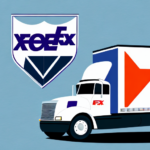Understanding FedEx Ground Fuel Surcharges
If you frequently use FedEx Ground for shipping, you may have noticed fuel surcharges on your invoices. Understanding these surcharges is crucial for managing your shipping costs and ensuring your business remains profitable. This article provides a comprehensive overview of FedEx Ground fuel surcharges, including their operation, purpose, calculation methods, and strategies to mitigate their impact.
How FedEx Ground Fuel Surcharges Work
FedEx Ground fuel surcharges are additional fees added to your shipping invoices to account for fluctuating fuel costs. These surcharges are calculated as a percentage of the total shipping cost and vary based on the current market price of fuel. When fuel prices rise, so does the fuel surcharge, directly impacting your shipping expenses.
Calculation Method
The fuel surcharge percentage is determined by the U.S. Gulf Coast (USGC) spot price for kerosene-type jet fuel. FedEx Ground updates its fuel surcharge rates weekly, typically every Monday, reflecting the latest national average diesel prices. For example, if your shipment costs $100 and the fuel surcharge is 3%, your final invoice total will be $103.
Frequency of Updates
Since FedEx Ground adjusts its fuel surcharge rates weekly, frequent shippers may notice fluctuations in shipping costs. It's essential to monitor these updates regularly to manage your shipping budget effectively.
Reasons Behind FedEx Ground Fuel Surcharges
FedEx Ground implements fuel surcharges primarily to offset the increasing cost of fuel. This strategy ensures that the company can maintain competitive pricing while covering operational expenses linked to fuel consumption.
Offset Rising Fuel Costs
Fuel is a significant operational expense for shipping companies. By applying fuel surcharges, FedEx Ground ensures that rising fuel prices do not erode their profit margins or lead to service quality compromises.
Encouraging Fuel-Efficient Shipping
Fuel surcharges incentivize customers to choose more fuel-efficient shipping options. By adjusting surcharges based on the fuel efficiency of different shipping methods, FedEx promotes environmentally responsible practices.
Investment in Sustainability
Revenue from fuel surcharges is often reinvested into sustainable technologies and strategies. This investment helps FedEx Ground reduce its overall fuel consumption and minimize its carbon footprint.
Impact of Fuel Prices on FedEx Ground Rates
Fuel prices have a direct correlation with FedEx Ground shipping rates. When fuel prices rise, shipping rates increase due to higher fuel surcharges. Conversely, lower fuel prices can lead to reduced shipping costs.
Budgeting and Negotiation
Businesses should monitor fuel price trends to anticipate changes in shipping costs. During periods of low fuel prices, there may be opportunities to negotiate better rates with FedEx Ground. Additionally, understanding fuel surcharge dynamics can help in more accurate budgeting and financial planning.
Comparing FedEx Ground Surcharges with Other Shipping Providers
It's beneficial to compare fuel surcharges across different shipping providers to ensure you're getting the best deal. While FedEx Ground's surcharges are competitive, other providers like UPS and DHL may offer lower surcharges or additional incentives for high-volume shippers.
Alternative Shipping Providers
Exploring alternative shipping options can lead to cost savings. Providers such as UPS, DHL, and USPS have varying surcharge structures and may offer promotions or discounts that can be advantageous depending on your shipping volume and needs.
Strategies to Manage Fuel Surcharges
Managing the impact of fuel surcharges on your business requires strategic planning and optimization of shipping practices. Here are some effective strategies:
- Monitor Fuel Prices: Keep track of fuel price trends to anticipate surcharge changes.
- Negotiate Rates: Engage with FedEx Ground during low fuel price periods to negotiate better rates.
- Consolidate Shipments: Combine multiple shipments into a single shipment to reduce the number of surcharges incurred.
- Optimize Packaging: Use lighter packaging materials to decrease shipment weight, thereby lowering fuel surcharges.
- Explore Alternative Providers: Compare services and surcharges from different carriers to find the most cost-effective option.
The Future of FedEx Ground Fuel Surcharges
The landscape of fuel surcharges is evolving with advancements in fuel technology and shifts in regulatory frameworks. The future of FedEx Ground fuel surcharges may be influenced by several factors:
Adoption of Alternative Fuels
As FedEx invests in electric and hybrid delivery vehicles, the company's reliance on traditional fuel may decrease. This shift could lead to more stable or reduced fuel surcharges over time.
Regulatory Influences
Government regulations aimed at reducing carbon emissions and promoting sustainable practices may impact how fuel surcharges are structured. Incentives for using eco-friendly fuels could also play a role in future surcharge calculations.
Conclusion
Understanding FedEx Ground fuel surcharges is essential for businesses that rely on shipping services. By comprehending how these surcharges are calculated, the reasons behind their implementation, and strategies to manage their impact, you can make informed decisions to optimize your shipping costs. Staying informed about fuel price trends and exploring alternative shipping options will help ensure your business remains competitive and profitable in a dynamic market.






















